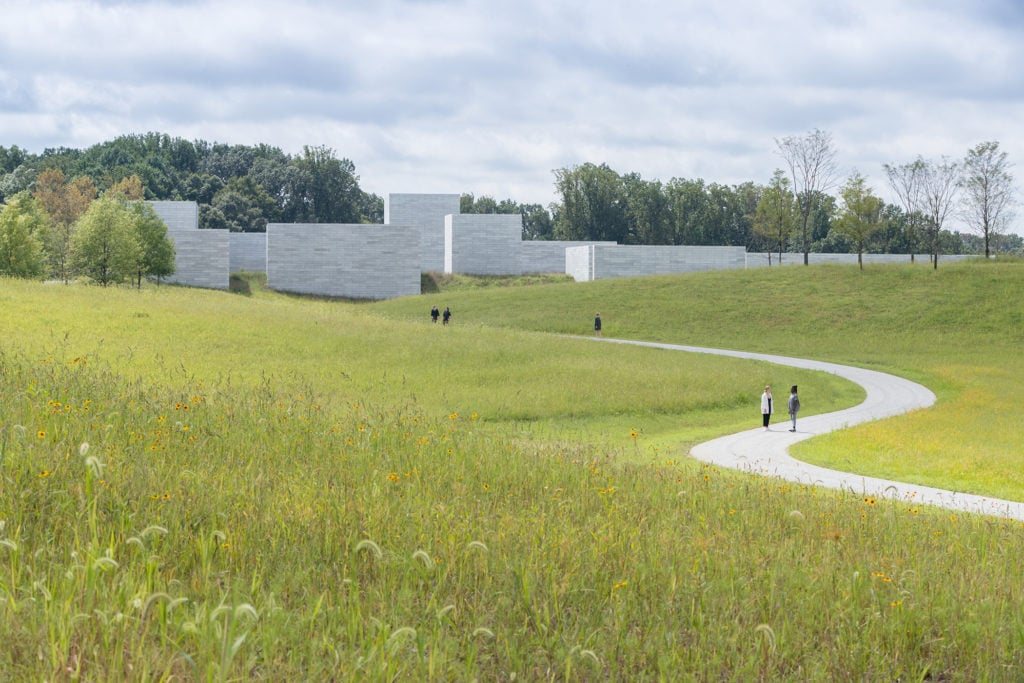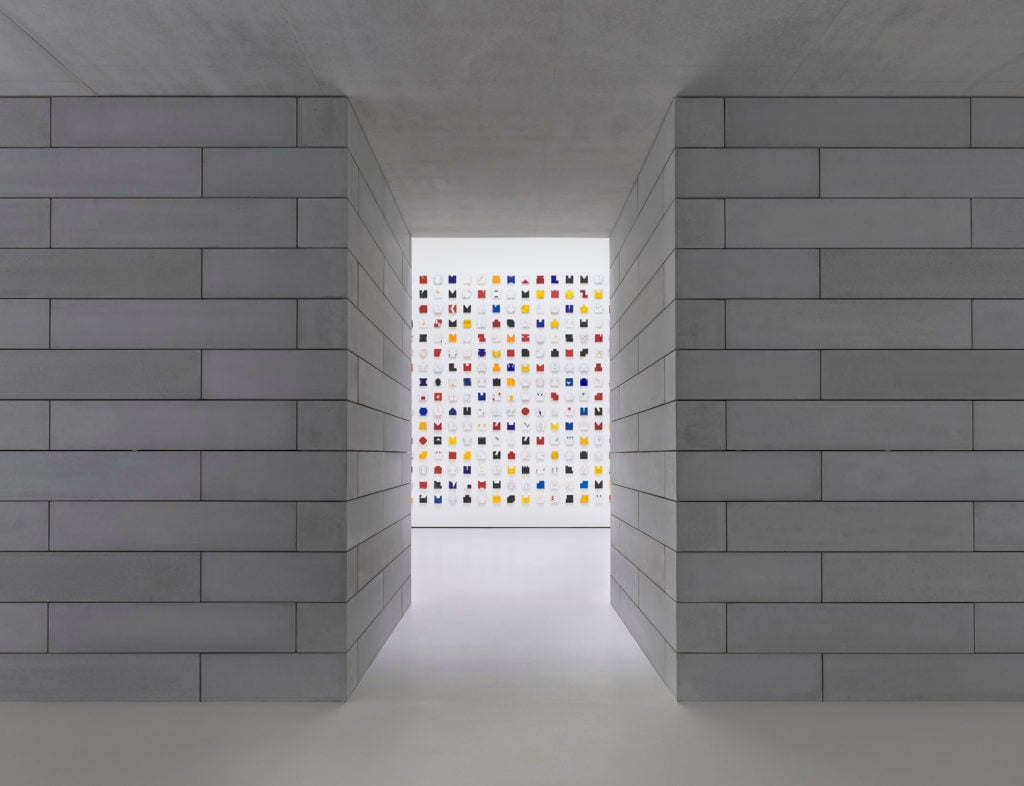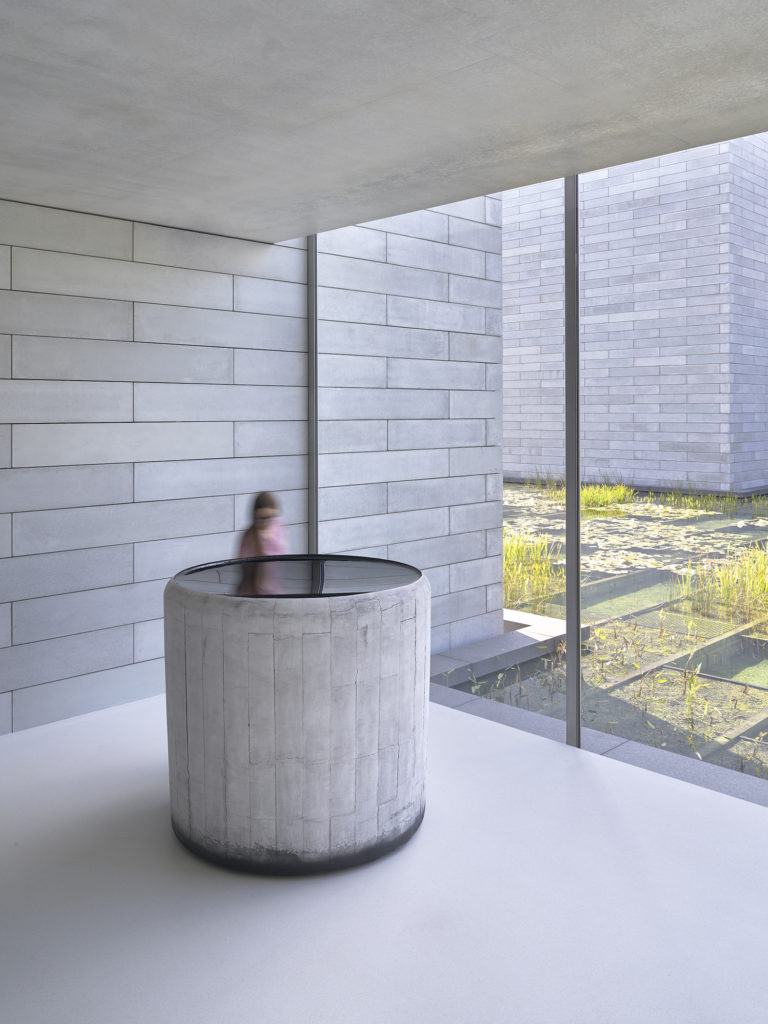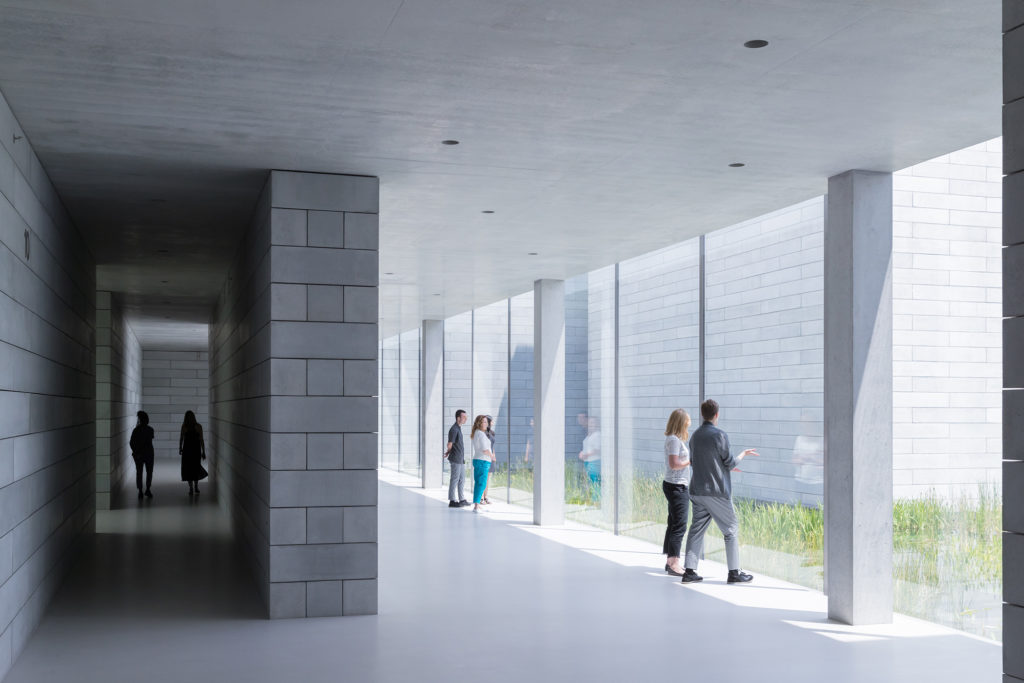Right now, as museums around the world are beginning to admit visitors after being shuttered by the pandemic for months on end, the operational playbook is more or less the same everywhere: online ticketing, staggered entry times, hand-sanitizer stations, mandatory face coverings, one-way circulation routes, and reminders to stay at least six feet away from others. Receptions, tours, and other on-site programming are suspended for the foreseeable future.
Audiences will, without a doubt, struggle to adapt to these new rules. Commentators have been quick to point out the loss in visitor amenities, but not many have considered what people stand to gain from a pared-down museum visit. Those who have grown accustomed to bustling lobbies, ticket queues, and blockbuster exhibitions will return to a much quieter, socially distanced art-viewing experience. And it is one that will look strikingly similar (minus the face masks) to an average day at Glenstone, the institution I founded with my husband Mitch, and where I serve as director.
In October 2018, we opened the Pavilions, a museum building designed by Thomas Phifer and Partners, to expand upon the exhibition program we had been presenting at our first building where we had been welcoming visitors for over a decade. The Pavilions increased our total indoor exhibition space from 9,000 to 59,000 square feet, on par with that of The Broad in downtown Los Angeles and the Whitney Museum of American Art in New York. But while The Broad and the Whitney each saw around one million visitors in 2019, we hosted one-tenth of that number in our first year of operation. The fact that Glenstone is situated in a quiet exurb of Washington, D.C. only partially explains the magnitude of the disparity. The real reason is that the experience we have developed for visitors is slow, quiet, and contemplative by design.

Emily Wei Rales. Photo: Julie Skarratt.
Since Glenstone’s inception, we have maintained a distinctive approach to the visitor experience that is based on the notion that lower crowd density enables prolonged and meaningful encounters with art. Before we even started designing the Pavilions, we devised a formula to determine our optimal visitor capacity by surveying attendance and square footage figures at various museums. We learned that, on average, an individual visitor occupied between 10 and 30 square feet of open space in a gallery. At the same time, we observed that we could comfortably accommodate up to 30 people in our existing building, which translates to 300 square feet per person, a number that would later inform the dimensions of the Pavilions.
The quality of spaciousness extends to the artwork displays as well. We follow a “less is more” strategy in our installations, placing a premium on negative space that acts as a palate cleanser between artworks. Reservations are required in order to maintain a steady flow of visitors through the gate. What we have found is that diffuse visitation patterns not only give our staff a better chance at protecting the safety of the artworks on display, they also eliminate bottlenecks and lines, allowing for a calmer experience. Notice that the goal is not to host fewer visitors, but rather to maintain a particular dispersal of visitors spread out over a given area—a nuance that is especially germane during our current health crisis. Before COVID-19 forced us to close, we were able to comfortably accommodate up to 600 visitors per day.

Approach to the Pavilions at Glenstone. Photo: Iwan Baan, courtesy of the Glenstone Museum.
Fewer crowds change the dynamics of spectatorship. People are encouraged to linger. It wasn’t until after we opened our expansion that we were introduced to Slow Art by Arden Reed, who argues that lengthening the duration of an encounter with an artwork is critical to gaining a deeper appreciation for it, contrary to the way most visitors see art in museums. According to Reed, Americans spend on average between six and ten seconds with individual artworks in galleries and museums, whereas at Glenstone, it’s common for visitors to gaze at objects for well over half an hour.
A sampling of comments that we’ve received testifies to the benefits of this kind of viewing. Glenstone, one visitor told us, has an “austere, and indeed, spiritual atmosphere” that imparts an “exhilarating sense of privacy” and allows for moments of quiet, intense focus. Not having to battle crowds is “refreshing” and “luxurious, kind of like seeing art in a private home.”
Whether Glenstone brings to mind a place of worship or a patron’s private gallery, these reflections suggest that our approach to visitation does more than deepen a viewer’s engagement with art. It shapes our relationship with our audience. They recognize the effort we have invested in creating an intimate, gracious, and meditative experience, and with that comes a closer connection with the institution. A high school art teacher who organized multiple visits for her students wrote, “Glenstone encourages individual ownership of the museum experience. The feeling of belonging increases at every visit.”

View into Installation of Lygia Pape, Livro do Tempo I (Book of Time I) (1961). ©Projeto Lygia Pape. Photo: Ron Amstutz, courtesy Glenstone Museum.
Not everyone prefers the solitude and slow pace of what I’ve just described. For many, a museum is a site of communal gathering filled with the pulsing energy of social activity, a cultural crossroads where ideas collide. I don’t disagree, but I believe there is room for both ends of the spectrum, and everything in between, because audiences deserve a diverse range of art experiences.
However, COVID-19 has effectively erased well over half of that spectrum in one fell swoop. It has also rendered useless the number one measure of success of arts organizations: attendance. And while there is general consensus among museum directors that attendance is not the sole metric for success—after all, the majority of institutions were established to collect and preserve material culture, and to provide educational programming—it is, as Guggenheim Museum director Richard Armstrong put it, an “index of relevance” in a world where museums compete with sporting events, musical performances, and other forms of cultural activity for the attention of the public. Without exception, museums in the COVID-19 era must find alternative ways to gauge how well they are serving their audiences.
This is not a new problem. Museum leaders have been proposing and applying more thoughtful, holistic yardsticks for quite some time. Yet the misconception that museums only measure their worth in attendance figures persists due to the fact that qualitative, “soft” standards—such as the quality of the experience or the fulfillment of an educational mandate—are tricky to substantiate and measure, making them a tough pitch to trustees and prospective donors.

Roni Horn at Glenstone. Photo: Ron Amstutz, courtesy of Glenstone Museum.
In this regard, social media can offer a helpful analogue for how to evaluate impact. Social-media influence can be measured in multiple ways: analysts refer to “reach” as the number of users who see your content, while “engagement” is the number of likes, comments, and interactions those users have with that content. Rather than publicize how many visitors or “followers” a museum has, now is the time of focus on the rate of engagement, which tells us more about the degree to which audiences feel connected to and enriched by their experience.
As museums begin to tentatively unlock their doors to the limited number of visitors who venture out, they will naturally become places of respite from the chaos and uncertainty so prevalent in these troubled times. And in doing so, they will satisfy an essential need that is far more profound than entertainment.
Emily Rales is the co-founder and director of Glenstone.
Follow Artnet News on Facebook:
Want to stay ahead of the art world? Subscribe to our newsletter to get the breaking news, eye-opening interviews, and incisive critical takes that drive the conversation forward.









